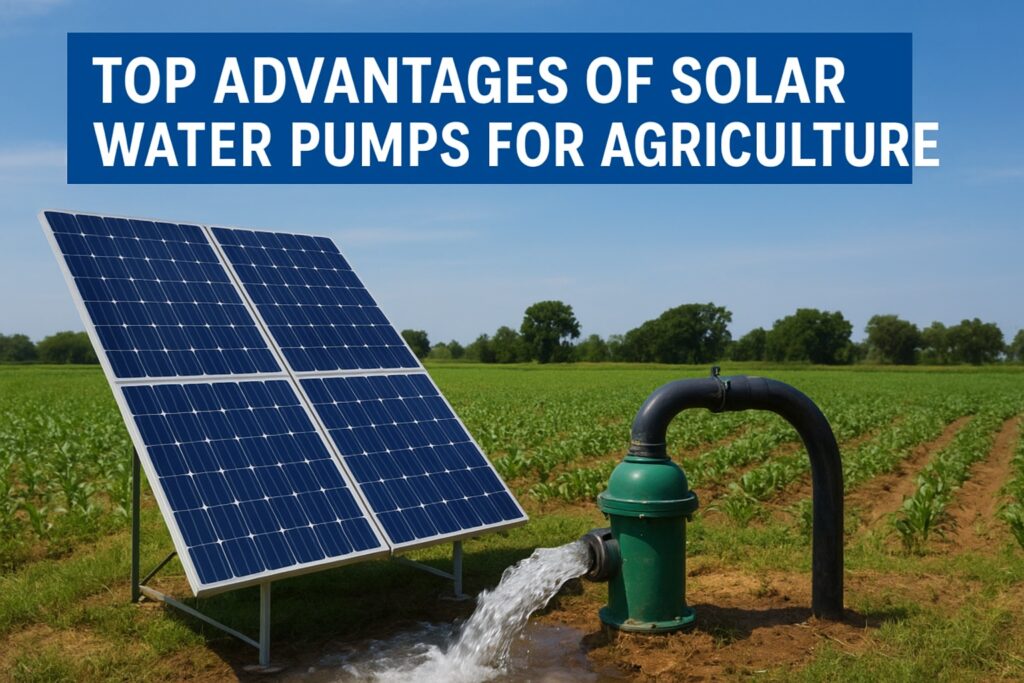Water is the lifeline of agriculture. Farmers depend on reliable irrigation systems to grow healthy crops and sustain their livelihoods. Traditional pumps powered by diesel or electricity often come with high costs, frequent breakdowns, and limited availability in rural areas. This is where solar water pumps are transforming agriculture. By harnessing the power of the sun, farmers can enjoy reliable, cost-effective, and sustainable irrigation.
🌞 How Solar Water Pumps Work
A solar water pump uses solar panels to convert sunlight into electricity, which powers a motor to pump water from wells, rivers, or reservoirs. The system typically includes:
- Solar panels – Capture sunlight and generate electricity.
- Controller – Regulates power supply and ensures smooth operation.
- Pump (surface or submersible) – Lifts and moves water for irrigation.
- Storage tank (optional) – Stores water for use when sunlight is low.
The system works without fuel or external electricity, making it ideal for remote farms.
🌱 Benefits of Solar Water Pumps for Farmers
- Cost Savings
- No need for expensive diesel or electricity bills.
- Minimal operating costs after installation.
- Long-term savings that improve farm profitability.
- Reliable and Independent Energy
- Works even in off-grid areas with no electricity.
- Reduces dependency on fluctuating fuel prices.
- Provides steady water supply during critical irrigation periods.
- Eco-Friendly Farming
- Runs on clean, renewable solar energy.
- Helps farmers reduce their carbon footprint.
- Supports sustainable agriculture practices.
- Low Maintenance
- Fewer moving parts than diesel engines.
- Requires little upkeep and lasts for years.
- Better Crop Yields
- Timely irrigation ensures healthier crops.
- Increased productivity leads to better income for farmers.
🌍 Government Support for Solar Pumps
Many governments are actively promoting solar water pumps to support farmers and encourage clean energy adoption. Subsidy programs and financial assistance make these systems more affordable. For example:
- Subsidies: Governments often cover a percentage of the installation cost.
- Loans and Grants: Special schemes provide easy financing.
- Rural Development Programs: Focus on making water and energy more accessible for farmers.
Farmers should check with local renewable energy agencies or agricultural departments for available incentives.
✅ Conclusion
Solar water pumps are more than just an irrigation solution—they are a step toward sustainable farming. By offering cost savings, reliability, and eco-friendly energy, these systems empower farmers to improve productivity while reducing their dependence on fossil fuels. With strong government support, solar water pumps are set to play a major role in shaping the future of agriculture.

